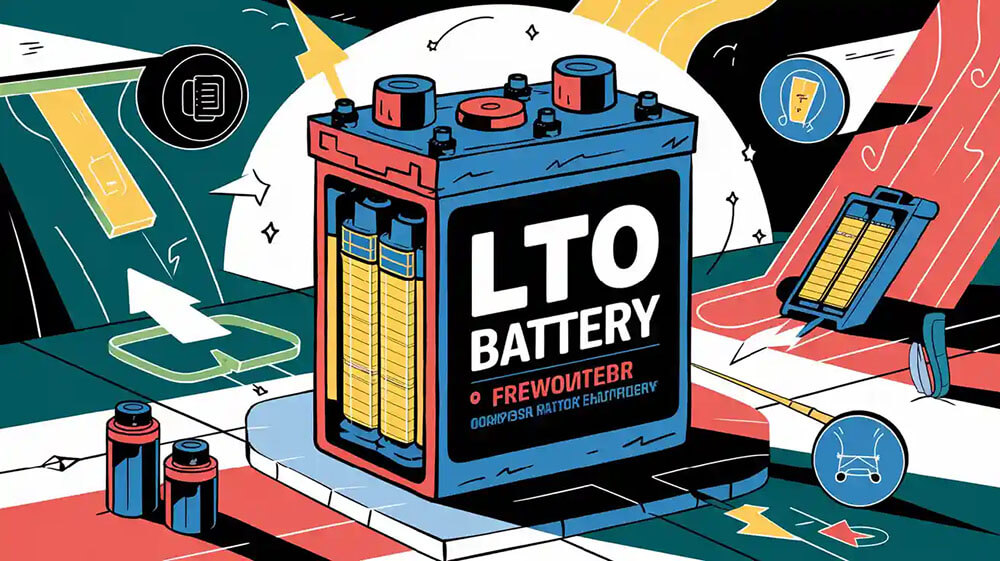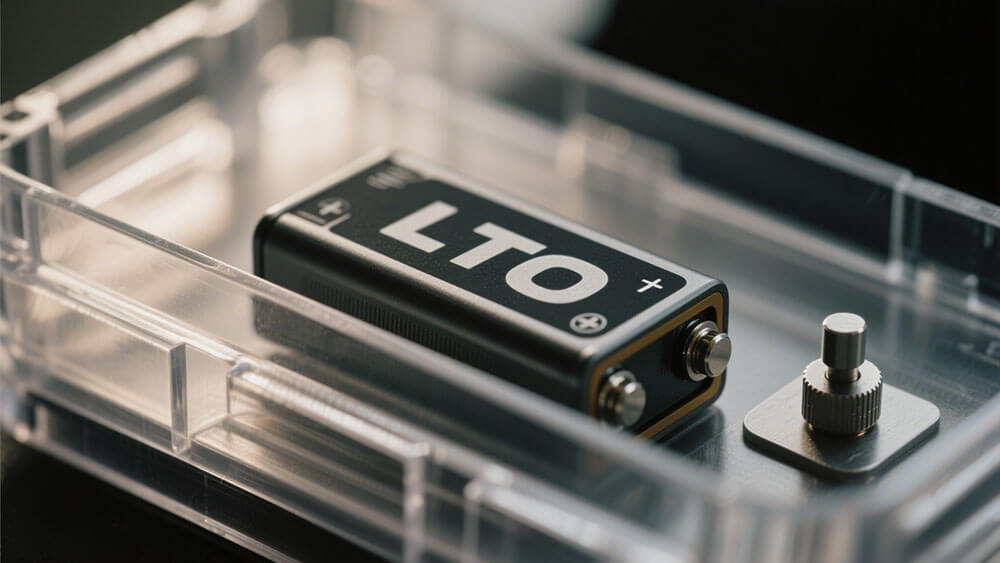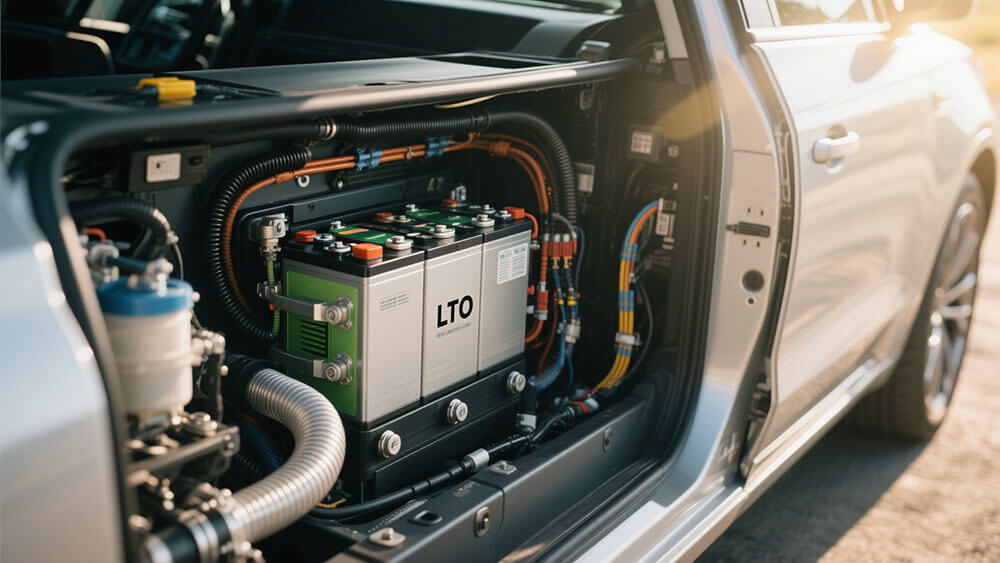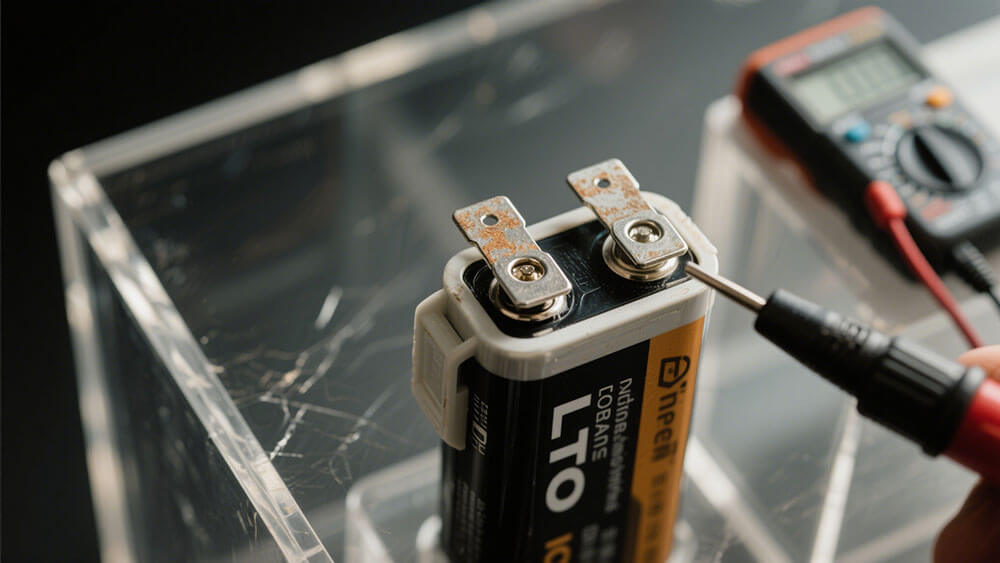Contents

LTO batteries are distinguished by their unique chemistry, utilizing lithium titanate as the anode material instead of graphite. This innovative design significantly enhances safety and stability, making LTO batteries a dependable option for energy storage. They exhibit exceptional cycling performance, maintaining a capacity of 162 mAh/g at a 3 C rate for over 100 cycles without any decay. Furthermore, LTO batteries operate efficiently across a wide temperature range from −20 to +55 °C, ensuring excellent voltage and capacity retention. These characteristics position LTO batteries as a durable and high-performing solution to meet modern energy demands.
Key Takeaways
LTO batteries use lithium titanate, which makes them safer and steadier. This makes them great for important uses like medical tools and robots.
These batteries charge very fast, fully charging in 10-15 minutes. This is great for electric cars and factory machines.
LTO batteries last a long time, over 20,000 uses. They save money on replacements and help with green energy.
Part 1: What Are LTO Batteries?

1.1 Unique Chemistry of LTO Batteries
LTO batteries, or lithium titanium oxide batteries, stand out due to their innovative chemistry. Unlike conventional lithium-ion batteries, which use graphite as the anode material, LTO batteries utilize lithium titanate oxide. This substitution results in a unique spinel structure that enhances stability and prevents dendrite formation—a common issue in other battery types that can lead to short circuits and reduced lifespan.
The spinel structure also facilitates rapid ion movement, enabling LTO batteries to deliver quick energy bursts. This high rate capability makes them ideal for applications requiring fast charging and discharging. Furthermore, the chemistry of LTO batteries significantly reduces the risk of overheating and thermal runaway, ensuring safer operation even under demanding conditions.
Tip: The enhanced safety and stability of LTO batteries make them a preferred choice for industries like medical devices, robotics, and security systems.
1.2 Key Features of LTO Battery Systems
LTO battery systems offer several key features that set them apart from other energy storage solutions. These include:
Fast Charging: LTO batteries excel in high-power charging and discharging, allowing rapid energy replenishment.
Safety: Their unique chemistry minimizes the risk of overheating and thermal runaway, ensuring reliable performance.
Extended Cycle Life: With the ability to endure over 20,000 charging cycles, LTO batteries far surpass the lifespan of traditional lithium-ion batteries.
Wide Temperature Range: They operate efficiently in extreme temperatures, from -20°C to +55°C, making them suitable for diverse environments.
These features make LTO batteries a versatile solution for applications ranging from industrial systems to consumer electronics.
1.3 Comparison with Other Battery Technologies
When comparing LTO batteries to other battery technologies, their advantages become evident. For instance, LTO batteries have a platform voltage of 2.4V and an energy density of 60–90 Wh/kg. While this energy density is lower than that of NMC Lithium batteries (160–270 Wh/kg) or LiFePO4 Lithium batteries (100–180 Wh/kg).
Additionally, LTO batteries outperform other technologies in terms of safety and temperature tolerance. Unlike LCO Lithium batteries, which are prone to overheating, LTO batteries maintain stability even under high-stress conditions. Their ability to operate in extreme temperatures also gives them an edge over LiPo Lithium batteries, which typically require controlled environments.
Note: While LTO batteries may have lower energy density, their durability and safety make them a cost-effective choice for long-term applications. Learn more about lithium-ion batteries.
Part 2: Advantages of LTO Batteries

2.1 Enhanced Safety and Stability
LTO batteries offer unparalleled safety and stability, making them a reliable choice for energy storage solutions. Their unique chemistry, which uses lithium titanate as the anode material, eliminates the risk of dendrite formation. This prevents short circuits and enhances operational safety. Furthermore, these batteries come equipped with built-in protection mechanisms against overcharging, overheating, and short circuits.
LTO batteries are recognized for their excellent safety, even in low-temperature environments.
Their robust design ensures a low failure rate, reducing the risk of thermal runaway.
These features make LTO batteries suitable for applications where safety is critical, such as medical devices, robotics, and security systems.
Tip: If you prioritize safety in your energy storage systems, LTO batteries provide a dependable solution with enhanced safety features.
2.2 Rapid Charging and High Discharge Rates
One of the key advantages of LTO batteries is their rapid charging capabilities. These batteries can achieve charging times as low as 10–15 minutes, making them ideal for applications requiring quick energy replenishment. Their high discharge rates also ensure consistent performance during peak energy demands.
Benchmark Type | Evidence |
|---|---|
Charge/Discharge Rate | Charging times as low as 10–15 minutes, ideal for rapid energy delivery. |
Cycle Life | Longevity of up to 20,000 cycles, significantly higher than the industry average. |
Safety | Failure rate of less than 0.01%, indicating a low risk of thermal runaway. |
The combination of rapid charging and high power output makes LTO batteries a preferred choice for electric vehicles and industrial applications.
2.3 Long Cycle Life and Durability
LTO batteries are renowned for their long cycle life, which significantly exceeds that of other lithium-ion batteries. They can endure over 20,000 charge/discharge cycles with minimal performance degradation. Even after 20,000 cycles, these batteries retain 80% or more of their discharge capacity.
At 100% depth of discharge (DOD), LTO batteries often exceed 20,000 cycles.
When operated at 80% DOD and lower C-rates, they can achieve up to the higher cycles.
This durability ensures that LTO batteries provide a cost-effective solution for long-term energy storage needs. Their extended lifespan makes them suitable for versatile applications, including electric vehicles and infrastructure projects.
2.4 Wide Temperature Range Performance
LTO batteries excel in maintaining performance across a wide temperature range. They operate efficiently in extreme conditions, from -20°C to +55°C. This adaptability ensures reliable performance in diverse environments, including cold climates and high-temperature industrial settings.
Note: The ability to function in extreme temperatures makes LTO batteries a versatile choice for energy storage solutions in challenging environments.
2.5 Environmental Benefits in Energy Storage
LTO batteries contribute to environmental sustainability by offering a longer lifespan and reducing the need for frequent replacements. Their stable chemistry minimizes the risk of hazardous leaks, making them an eco-friendly option for energy storage.
By choosing LTO batteries, you can reduce your ecological footprint while benefiting from a reliable and durable energy storage solution. For more information on sustainability in battery technology, visit Sustainability at Large Power.
Tip: Explore custom battery solutions tailored to your specific needs by visiting Custom Battery Solutions from Large Power.
Part 3: Challenges and Solutions for LTO Batteries

3.1 Addressing Energy Density Limitations
LTO batteries face a significant challenge in their lower energy density, which ranges between 60–90 Wh/kg. This is considerably lower than NMC Lithium batteries (160–270 Wh/kg) or LiFePO4 Lithium batteries (100–180 Wh/kg). The reduced energy density limits their application in devices requiring compact and lightweight energy storage solutions, such as portable consumer electronics.
To overcome this limitation, researchers are exploring advanced material engineering. For instance, combining LTO with high-capacity cathode materials like nickel-rich NMC can enhance overall energy density. Additionally, optimizing electrode design and improving electrolyte formulations can further boost performance.
Tip: If energy density is a critical factor for your application, consider hybrid battery systems that integrate LTO with other chemistries.
3.2 Cost Challenges and Market Adoption
The production cost of LTO batteries remains higher than other lithium-ion batteries due to the complex manufacturing process of lithium titanate materials. This cost barrier has slowed their adoption in price-sensitive markets, such as consumer electronics and electric vehicles.
However, economies of scale and advancements in manufacturing technologies are gradually reducing costs. Governments and industries are also investing in research to make LTO batteries more affordable. For example, initiatives to develop cost-effective raw material sourcing and recycling processes are gaining traction.
Note: While LTO batteries may have a higher upfront cost, their long cycle life and durability often result in lower total ownership costs over time.
3.3 Innovations in LTO Battery Technology
Continuous innovation is driving the evolution of LTO battery technology. Researchers are focusing on enhancing the energy density and reducing production costs without compromising safety and durability. For example, integrating solid-state electrolytes into LTO batteries can improve energy density and thermal stability.
Another promising development is the use of nanotechnology to refine the particle size of lithium titanate. This approach increases the surface area for ion exchange, enabling faster charging and higher energy output.
LTO batteries deliver unmatched advantages in energy storage systems. Their safety, rapid charging, and long cycle life make them indispensable for modern applications.
Advantage | Description |
|---|---|
Safety | Less prone to thermal runaway, ensuring safer operation in various conditions. |
Rapid Charging | Achieves full charge in as little as 10 minutes, ideal for quick turnaround needs. |
Long Cycle Life | Exceeds 20,000 cycles, reducing replacement costs and enhancing longevity. |
Wide Temperature Range | Operates effectively from -30°C to +55°C, suitable for extreme environments. |
Environmental Benefits | Free from harmful materials and fully recyclable, promoting sustainability. |
You can rely on LTO batteries for versatile applications, including electric vehicles, renewable energy systems, and industrial equipment.
The automotive industry increasingly favors LTO batteries for their fast charging and enhanced safety.
Renewable energy systems benefit from their reliability and ability to stabilize grids.
The global lithium-ion battery energy storage market is projected to grow at a CAGR of 13% from 2025 to 2035, highlighting their expanding role in industrial energy storage.
Adopting LTO batteries supports sustainability while meeting high-performance demands. Explore their potential to transform your energy solutions.
FAQ
1. What makes LTO batteries suitable for energy storage?
LTO batteries excel in energy storage due to their long cycle life, rapid charging, and ability to perform in extreme temperatures. These features ensure reliable and efficient operation.
2. Can LTO batteries be used in heavy construction machinery?
Yes, LTO batteries are ideal for heavy construction machinery. Their durability, high discharge rates, and wide temperature range make them reliable for demanding industrial applications.
3. Are LTO batteries environmentally friendly?
LTO batteries offer environmental benefits by reducing waste through their long lifespan. Their stable chemistry minimizes hazardous leaks, making them a sustainable choice for energy storage applications.
Tip: For professional guidance on environmentally friendly battery, visit Large Power.





